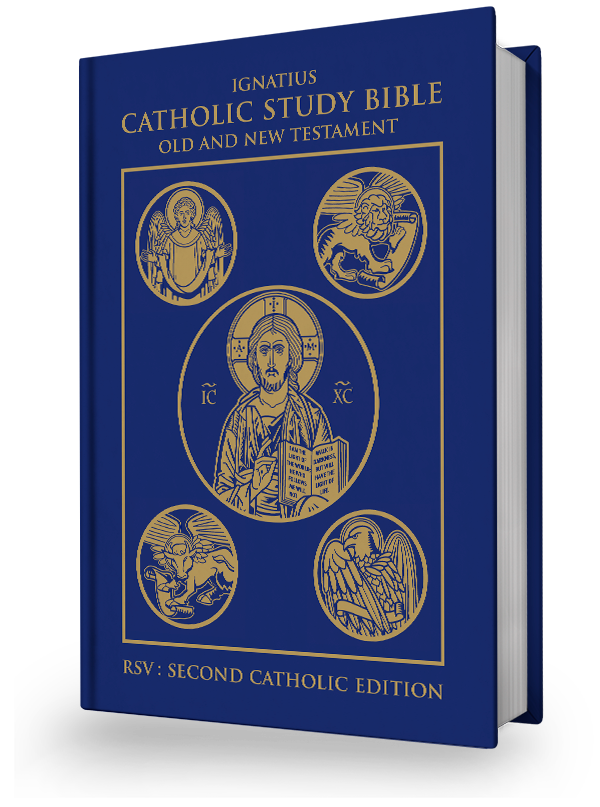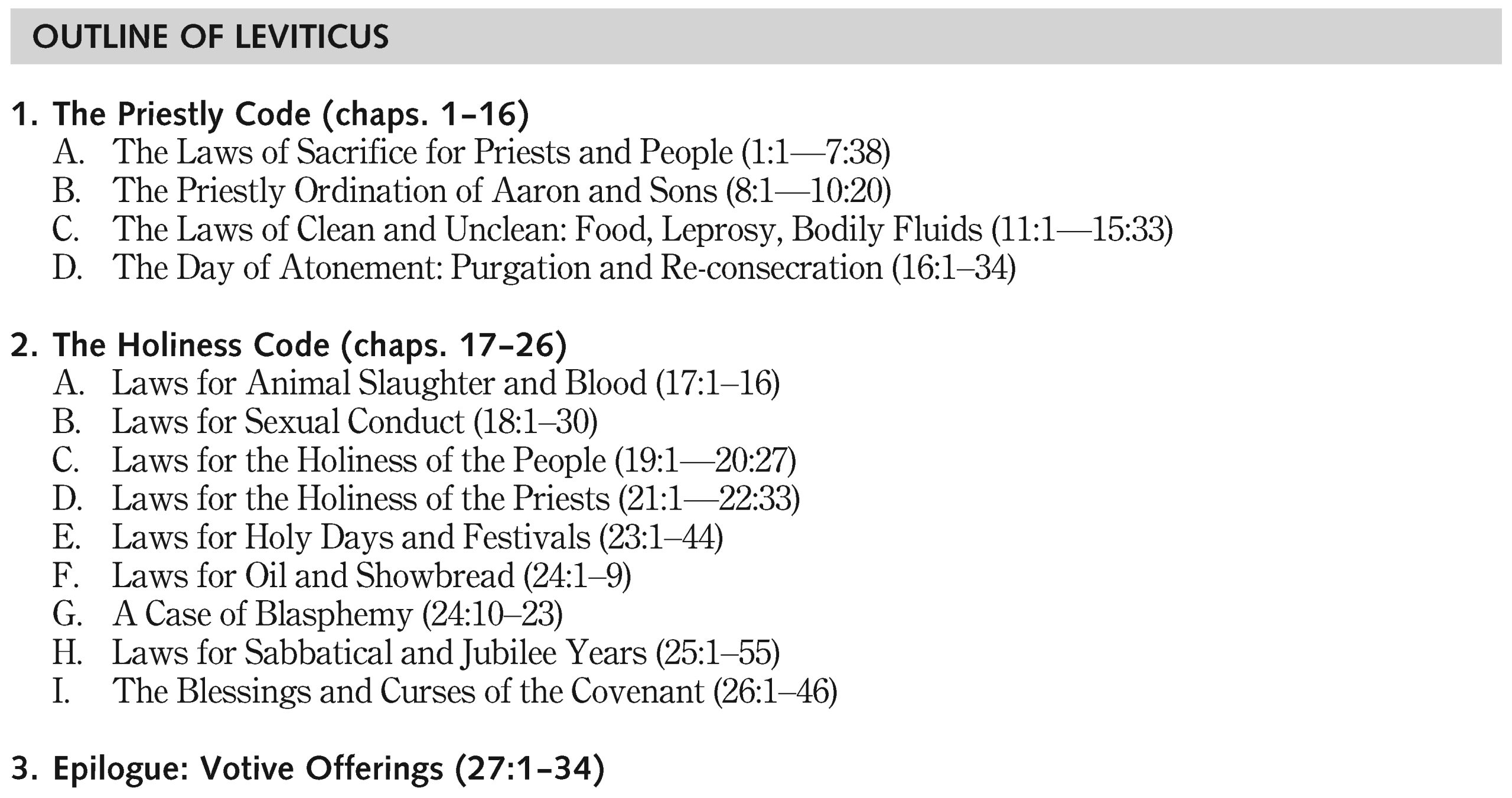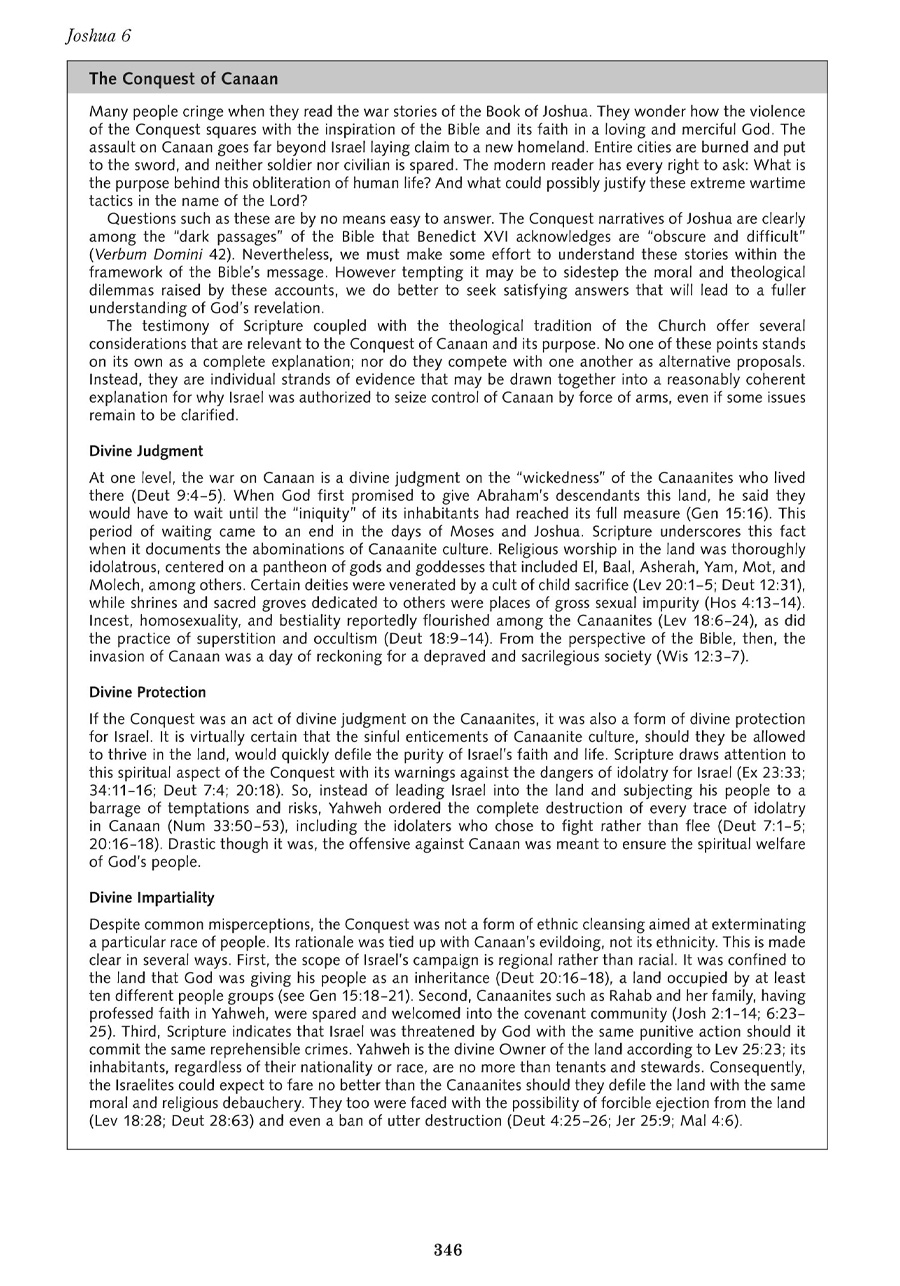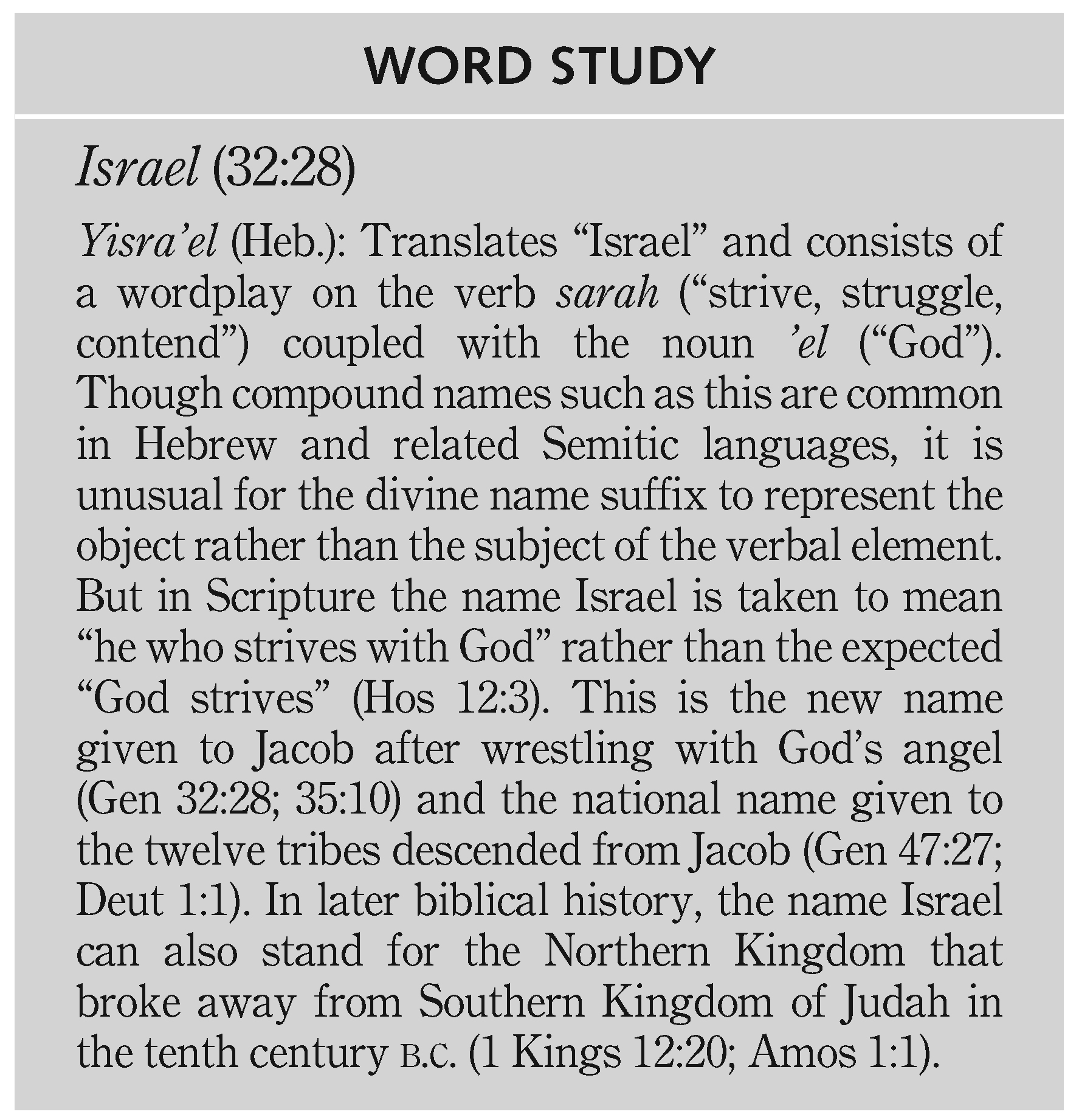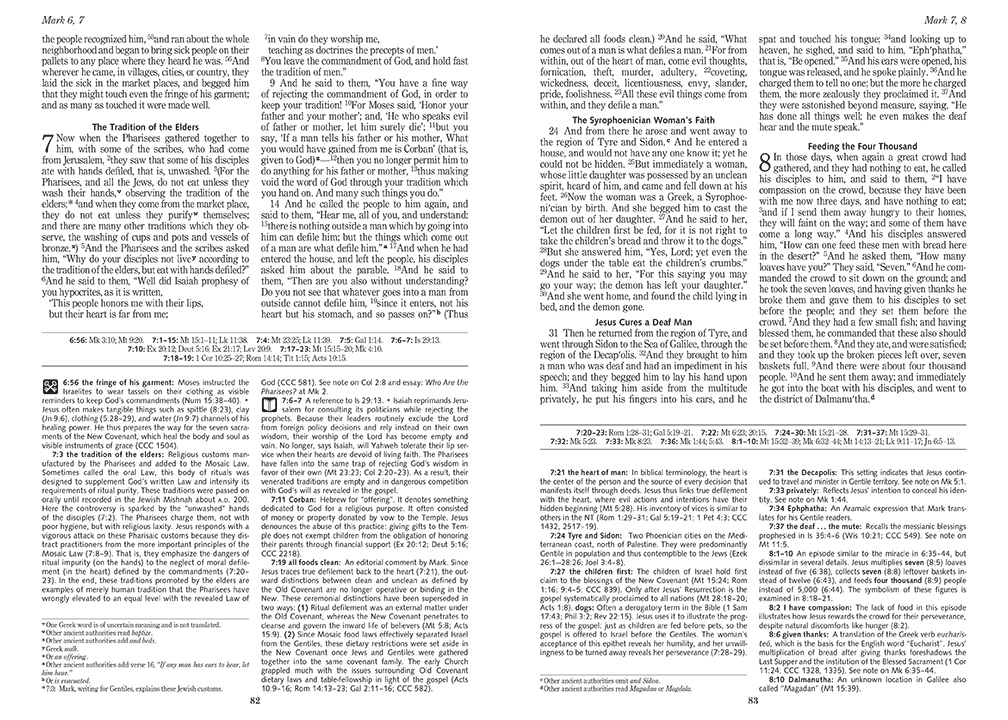Overview
The whole of Scripture, Old Testament and New, is being published in a single volume, featuring the beautiful Revised Standard Version, Second Catholic Edition (RSV2CE) translation along with introductions, outlines, and explanatory notes for each biblical book, extensive cross-references to the Catechism of the Catholic Church, and an array of visual and educational aids to bring the message of Scripture into clear focus for Catholic readers.
Drawing Insight from
Modern Scholarship
and Catholic Tradition
More than any other study edition of the Bible on the market, the Ignatius Catholic Study Bible is “like a householder who brings out of his treasure what is new and what is old” (Mt 13:52): it draws insights from the best of modern scholarship as well as the best of the Catholic tradition of interpretation through the ages.
This Study Bible explains the historical, cultural, and literary background of Scripture, while at the same time looking to the Fathers, Doctors, and Councils of the Church for insight into its theological and spiritual teachings.
The result is a veritable library of Bible study resources, all under one cover, designed to help readers understand the written Word of God and apply its lessons to their lives today. It is simply the most ambitious undertaking of its kind in our generation.
Developed by Leading Scholars
The Ignatius Press Study Bible has been developed by leading Scripture scholars.

Scott Hahn, Ph.D.
General Editor, Franciscan University, and St. Paul Center

Curtis J. Mitch, M.A.
Co-Editor, Augustine Institute
Contributing Authors and Editors:
Kelly Anderson, S.S.L., Ph.D.,
Saint Charles Borromeo Seminary
Michael Barber, Ph.D.,
Augustine Institute
John Bergsma, Ph.D.,
Franciscan University and St. Paul Center
Mark Giszczak, S.S.L., Ph.D.,
Augustine Institute
John A. Kincaid, Ph.D.,
University of Mary
Jeffrey L. Morrow, Ph.D.,
Franciscan University and St. Paul Center
James B. Prothro, Ph.D.,
Augustine Institute
Andrew Swafford, S.T.D.,
Benedictine College
Leeanne Thomas, M.A.
Matthew J. Thomas, D.Phil.,
Dominican School of Philosophy and Theology
David Twellman, Ph.D.,
Sacred Heart Major Seminary
André Villeneuve, Ph.D.,
Sacred Heart Major Seminary and Jerusalem Center for Biblical Studies
Key Features
Explore the rich features of our latest Catholic Study Bible, offering introductions, footnotes, essays, maps, and cross-references.
- RSV2CE translation
- 9-point type size
- Trim size: 7 x 2 3⁄8 x 10
- 2,320 pages printed on standard Bible stock, plus a 16-page color map insert
Introductions and outlines for every book of the Bible
17,500+ explanatory footnotes
20+ topical essays on major topics in the Bible
140+ word studies on the most important vocabulary in the Bible
25+ charts on the chronology, kings, parables, and other features of the Bible
50+ maps showing the geography of the Bible
1,700+ cross-references to the Catechism of the Catholic Church
Key Annotations
for Deeper Understanding
Three graphic images mark annotations that pertain directly to the Church’s three criteria for the theological interpretation of Scripture.
Relate to the content and unity of Scripture
Connecting Old Testament passages to New Testament mysteries, these notes highlight their relevance to Christ and the Church, fostering appreciation for God’s unified plan.
Examine particular passages in light of the Church’s living tradition
These annotations draw from the Holy Spirit’s guidance of the Magisterium and Scripture’s spiritual senses. They encompass Church teachings from popes, creeds, and councils, as well as interpretations from Fathers, Doctors, and saints.
Pertain to the analogy of faith
Study Tools
This Catholic Study Bible is designed to lead the reader through Scripture according to the Church’s guidelines—faithful to the canon, the tradition, and the creeds.
The Church’s interpretive principles have thus shaped the component parts of this book, and they are designed to make the reader’s study as effective and rewarding as possible.
The following is a brief overview of the penetrating study tools in the Ignatius Press Study Bible.
Outlines and Introductions
We have introduced each biblical book with an outline and an introductory essay covering issues such as authorship, date of composition, purpose, and leading themes.
This background information will help readers approach and understand the text on its own terms.
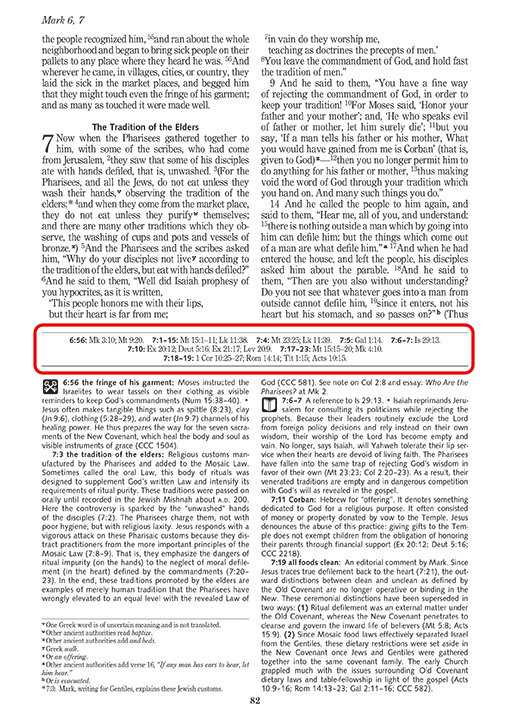
Numerous Cross References to Related Scriptural Passages
Between the biblical text at the top of each page and the annotations at the bottom, numerous references are listed to point readers to other scriptural passages related to the one being studied.
This follow-up is an essential part of any serious study. It is also an excellent way to discover how the content of Scripture “hangs together” in a providential unity.
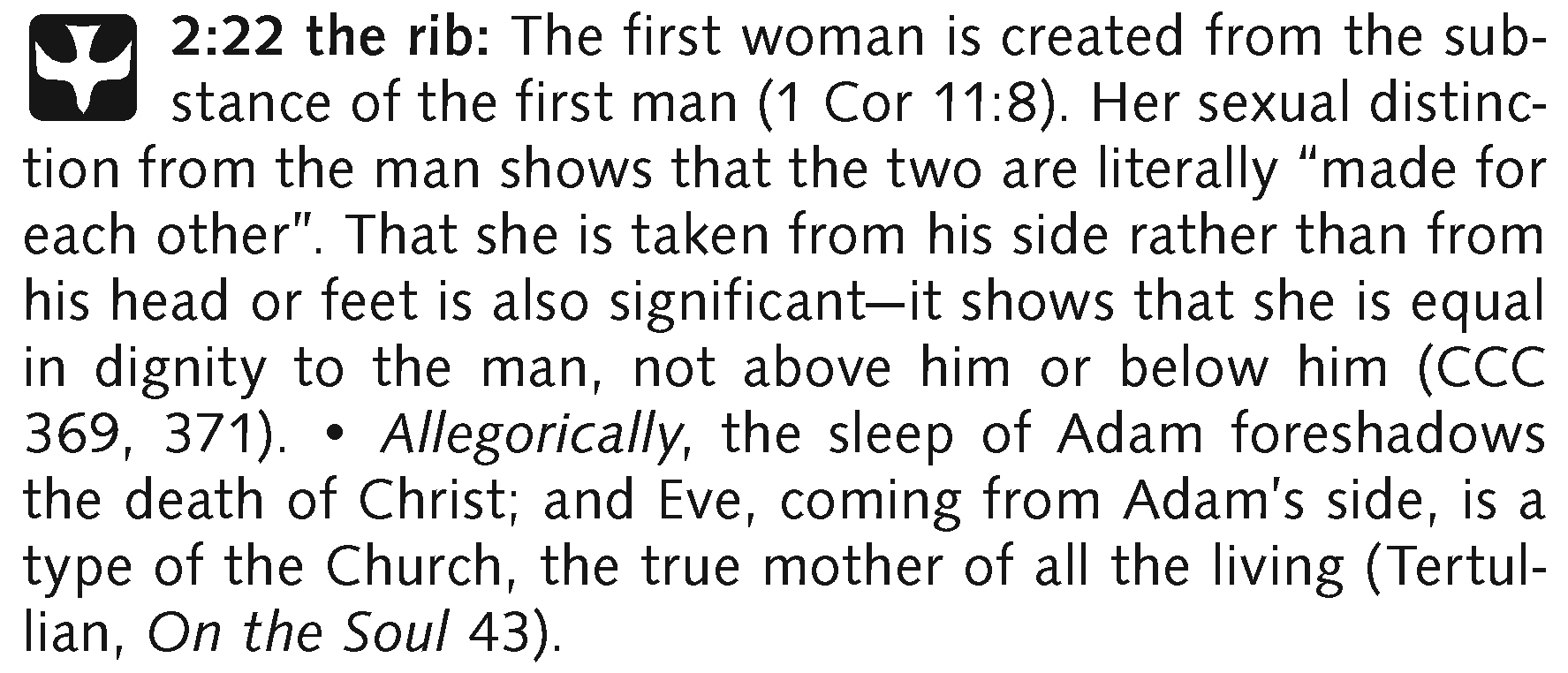
Extensive Cross References to the Catechism of the Catholic Church
Along with biblical cross-references, the annotations refer to select paragraphs from the Catechism of the Catholic Church. These are not doctrinal “proof texts” but are designed to help the reader interpret the Bible in accordance with the mind of the Church. The Catechism references listed either handle the biblical text directly or treat a broader doctrinal theme that sheds significant light on that text.
Charts
Word Studies
These help readers understand better and appreciate the inspired terminology that runs throughout the sacred books.
Extensive Annotations
The 17,500+ notes at the bottom of every page help users read the Scriptures with understanding. They by no means exhaust the meaning of the sacred text but provide background material to help readers make sense of what is read.
Often these notes make explicit what the sacred writers assumed or held to be implicit.
The annotations also provide much historical, cultural, geographical, and theological information pertinent to the inspired narratives—information that can help readers bridge the distance between the biblical world and our own.
